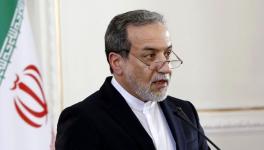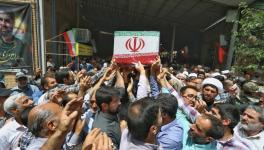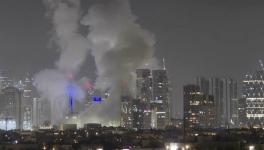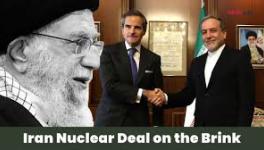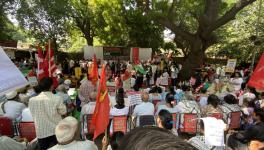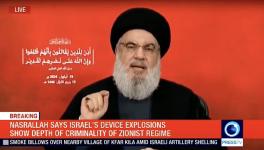Iran Unbound. What it Means.
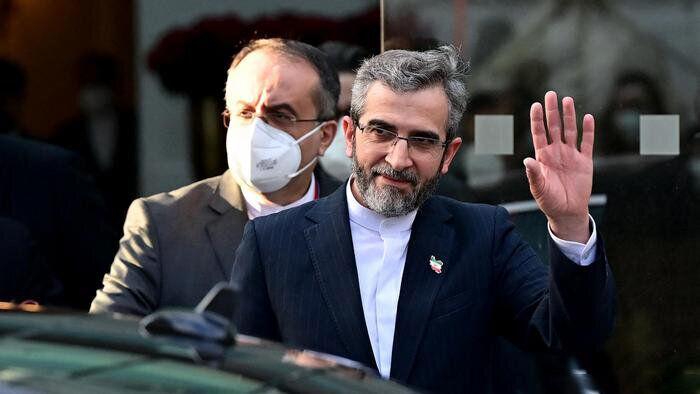
Iran’s negotiator Ali Bagheri says nuclear deal ‘closer than ever’
The negotiations in Vienna over the revival of the Iran nuclear deal, known as JCPOA, are almost certainly close to an agreement. The surest sign is that crude oil futures were sharply lower in mid-morning Asian trade February 17 despite bearish developments due to the rising tensions on the Ukraine-Russia border. Even an interim deal could potentially increase oil exports by 700,000 barrel/day, according to S&P Global Platts Analytics, easing the persistent tightness in oil markets.
Iran’s top negotiator Ali Bagheri Kani said on Twitter on February 16 that US and Iran were nearing an agreement. “After weeks of intense negotiations, we have come closer to an agreement than ever, but nothing has been agreed until everything has been agreed,” Kani tweeted. Earlier in the day, US State Department spokesperson Ned Price said the sides were in the “very final stages” of negotiations.
The Iranian news agency IRNA reported, “The eighth round of talks on lifting sanctions in Vienna began on January 26 and has now reached a point where the success or failure of the talks depends solely on the political decisions of the West. If the Western parties make the necessary decisions, the remaining issues can be resolved and a final agreement reached within a few days. Based on the principles and instructions, the Iranian delegation has put its clear proposals and demands on the remaining issues on the table, and now it is the west that has to make its own decisions.”
What a paradox that the US and its European allies are about to facilitate Iran’s integration into the western economy that will make it the last frontier for the industrial world’s post-pandemic recovery — a country whose access to buy medicines during the Covid-19 pandemic was blocked by Washington not too long ago!
Iran is a fabulously rich country endowed with mineral resources of all kinds. Iran’s proved natural gas reserves exceed 1,200 trillion cubic feet, second only to Russia, and it is the third largest producer of natural gas in the world after the United States and Russia. It also accounts for close to 10% of the world’s total oil reserves. Simply put, an energy superpower is appearing in the world energy market in the coming weeks.
Not only that, Iran is also rich in diverse mineral resources. According to the US Geological Survey, Iran’s zinc, copper and iron ore reserves are some of the largest in the world. Besides, it has large reserves of a range of minerals such as chromium, lead, manganese, sulphur, gold, uranium, titanium, etc. – and it is also home to vast reserves of lithium.
The sanctions had frozen Iran’s assets and affected, amongst other things, investment in gas, oil and petrochemicals, together with banking and insurance transactions, and shipping. The deal in Vienna will lead to the country’s economy being reopened to investment, technology transfer and global trade.
For the world at large, ‘business as normal’ with Iran will unlock some of the most stupendous riches on the planet. Iran’s purchasing power is incredible as it will generate a huge income with oil price hovering around $90 per barrel. Statista ranks Iran as the fifth leading country worldwide based on natural resources value ($27.3 trillion) as of 2021 — above China ($23 trillion) and way above India ($0.11 trillion.)
Unsurprisingly, Iran’s integration into the world economy makes the stuff of geopolitics. In a nutshell, an authentic regional power is rising, which has great potential to be a global power, given its agricultural and technological base, trained manpower, large domestic market (population: 85 million) and geographical location.
For example, in another 3-5 years, Iran can be a major alternate source of energy for the European continent, rivalling Russia; yet, if Iran joins hands with Russia to create a cartel or to reach an arrangement in market share, the two of them alone will be accounting for some 40-45% of the world’s total gas reserves! Quite obviously, Russia-Iran partnership is going to be a hugely strategic template of global politics.
Iran and Russia are already throwing sand in the gears of the US sanctions regime. Both are now connected through the Russian SPFS (System for Transfer of Financial Messages) and the Iranian SEPAM (Iran’s financial telecommunications system) so as to bypass US-controlled systems. They are using a new system as an alternative to payments through SWIFT to protect themselves from Washington’s sanctions.
It is all about ditching the US dollar and protecting the two countries’ banks and bank-rollers from secondary sanctions! By the way, Tehran has joined the Russia-led free-trade zone, the Eurasian Economic Union. As things stand, the new system of payment between Iran and Russia and trade in local currencies are here to stay. The two neighbours have got used to their new system of payment and trade in local currencies and their partnership will continue even after the US lifts its sanctions and returns to the nuclear deal.
Importantly, Russia and Iran have proven that trade in local currencies works. They are officially circumventing unilateral and secondary sanctions imposed by the US, and have shown that it is much safer to bilaterally trade in local currencies instead of taking the dollar risk. To be sure, this will not be a short-lived project so long as Washington’s unilateral foreign policy practices continue.
The same can be said in regard of the China-Iran relations. Iran is potentially a major hub for China’s Belt and Road Initiative. The two countries have worked out a 25-year road map for economic cooperation envisaging Chinese investment in Iran to the tune of $400 billion. The specifics of the agreement are largely in line with China’s ongoing Belt and Road Initiative (BRI), spending billions in infrastructure investment with an eye on long term influence and economic and security hegemony.
Major sectors include oil, gas, petrochemical, renewables, nuclear power, and energy infrastructure. The draft agreement also covered the high-tech and military cooperation, as well as port construction to facilitate Iran’s integration in China’s BRI trade routes. Again, one novel feature payments for all transactions will be in local currencies.
The single biggest geopolitical significance of the deal in Vienna will be that it tolls the bell for the US’ weaponisation of dollar. From now onward, the law of diminishing returns will be at work. This means that the status of the US dollar as the world currency is coming under serious challenge for the first time.
China and Russia are also accelerating their de-dollarisation push to enhance the security and convenience of their bilateral trade against potential unilateral US sanctions. Bulk commodity goods will become the main business area in which local currencies – China’s yuan and Russia’s ruble — will be used in mutual trade settlement, thanks to the robust growth of China-Russia trade, which reached a record $146.88 billion in 2021, up 35.8% from the previous year and is expected to soar to $200 billion by 2024.
Clearly, all three — China, Russia and Iran — have felt the urge to hedge risks by the US monopoly over the global payments infrastructure, and it is becoming an irreversible trend to promote non-dollar transactions. The repercussions for the debt-ridden American economy will be far-reaching.
In political terms, the lifting of the sanctions against Iran will have deleterious impact on the US’ capacity to influence events in West Asia. Israel is already showing signs of panic, as the regional balance is shifting dramatically. On the other hand, Iran has dozens of scores to settle with the US — something like what China calls its ‘century of humiliation’!
If Iran, Russia and China make coordinated moves, it will have repercussions in other regions such as the Horn of Africa and the Persian Gulf, the Caspian, Afghanistan and Central Asia, etc. All indications are that Tehran has plans to throw down the gauntlet to the US right in its Carribean backyard — in Venezuela, Nicaragua and Cuba, which also happen to have close, friendly ties with Russia and China. (The proven oil reserves of Venezuela, by the way, exceed 300 billion barrels, the largest in the world.)
Overall, therefore, with the geopolitical backing of Russia and China and the shackled removed from the lifeline for its economy, we can expect to see a revitalised and vastly more emboldened Iran – one with newfound energy to broaden its global reach. The Russian Foreign Minister Sergey Lavrov recently singled out Iran as ‘a member of the team’ — implying partnership with similar vision and common geo-strategic objectives.
Get the latest reports & analysis with people's perspective on Protests, movements & deep analytical videos, discussions of the current affairs in your Telegram app. Subscribe to NewsClick's Telegram channel & get Real-Time updates on stories, as they get published on our website.










